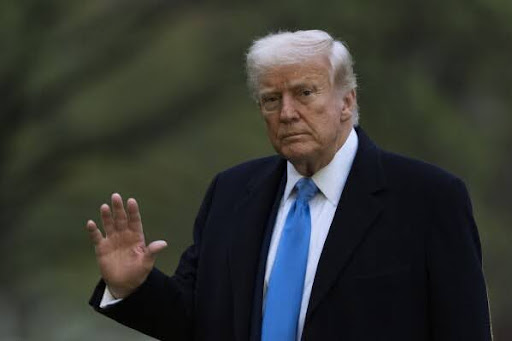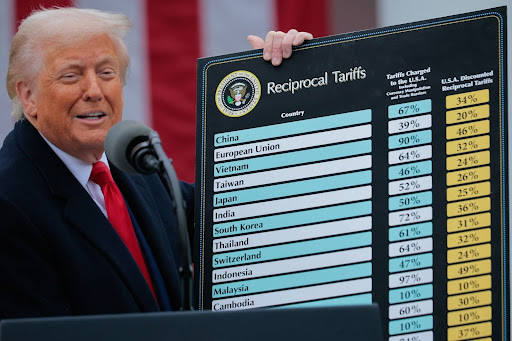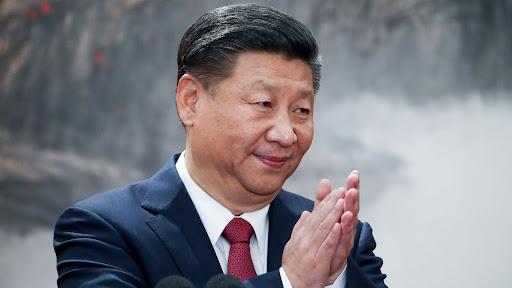Tensions between the United States and China have risen again after President Donald Trump threatened to impose new tariffs on Chinese goods. In response, China vowed to defend its interests and warned of further countermeasures. The exchange has sparked concerns about the possibility of a deeper global trade conflict.
Trump’s main reason for starting to impose tariffs on all nations and individual countries is because he believes these moves will boost the US economy and protect jobs in the US. He also believes that these tariffs will encourage US citizens to buy more American-made goods as opposed to foreign goods. Trump believes that taking these actions will lead to huge levels of investment in the country, which will help boost the American economy.
China responded to these tariffs by inflicting multiple retaliatory actions to get back at the US. In response to the US increasing tariffs on goods coming in from China, the Chinese current paramount leader, Xi Jinping, announced that China will “Fight to the end”, stating that China will keep increasing tariffs until the US stops increasing theirs. China’s goal is to force the US to make a decision to stop increasing tariffs. They believe that what the US is doing threatens national trade stability and jeopardizes national interests as well.
Donald Trump has escalated his hardline trade stance against China, warning of an additional 50% tariff on Chinese goods if Beijing does not reverse what he claims is a 34% increase driven by years of unfair trade practices. If carried out, the total tariffs imposed by the US on Chinese imports would rise to 104%, significantly raising the stakes in the ongoing economic standoff. This latest threat follows a series of earlier measures, including tariffs linked to fentanyl trafficking and other long-standing trade ultimatums, further hurting an already tense relationship.
Financial analysts believe that tariffs could affect global trade altogether. They believe that these actions from the US will drive China closer to other trading partners, such as members of the European Union. The EU consists of 27 European countries that are major allies of the US. They are important to the US because they play the lead role in international diplomacy and military strength. If the US continues to increase tariffs on China, it is very possible that they will lose one of its biggest trading partners in China. This is because China can look elsewhere for trading options in members of the EU.
In Beijing, public reactions to the growing trade tensions reflect a mix of skepticism, concern, and quiet resilience. Many residents view Trump’s shifting rhetoric as unpredictable, brushing off his threats as political posturing. However, for small business owners and importers, the situation feels far more serious. With the possibility of heavier tariffs and potential retaliation from China, some worry about rising costs, layoffs, and even the survival of their companies. Despite the uncertainty, many express confidence that China can withstand the pressure and navigate the challenges ahead.
Even as Trump has paused raising tariffs on other countries, China is still willing to raise tariffs. For example, this upcoming Saturday, April 19th, 2025, China announced that they will be raising tariffs on goods coming in from the US up to 125%, regardless if the US has stopped raising tariffs on other countries. This is intended to continue to put pressure on the US to force them to stop and even correct the mistakes that they have made, calling the US’s actions “economic bullying”. There is over $582 billion in bilateral goods trade at stake between the US and China, and the stakes remain high for both economies.
As tensions continue to rise, international and regional voices are pushing back against the US’s aggressive trade stance. Chinese officials have dismissed the possibility of meaningful dialogue, accusing the United States of lacking sincerity and respect in its approach to negotiations. In Hong Kong, leaders condemned the latest tariffs as “bullying,” warning that such actions threaten the stability of global trade.
In response, Hong Kong has pledged to deepen its economic integration with mainland China and expand partnerships worldwide. As the standoff intensifies, both sides appear to be digging in, leaving little room for compromise and raising questions about what comes next in this escalating trade battle.





















